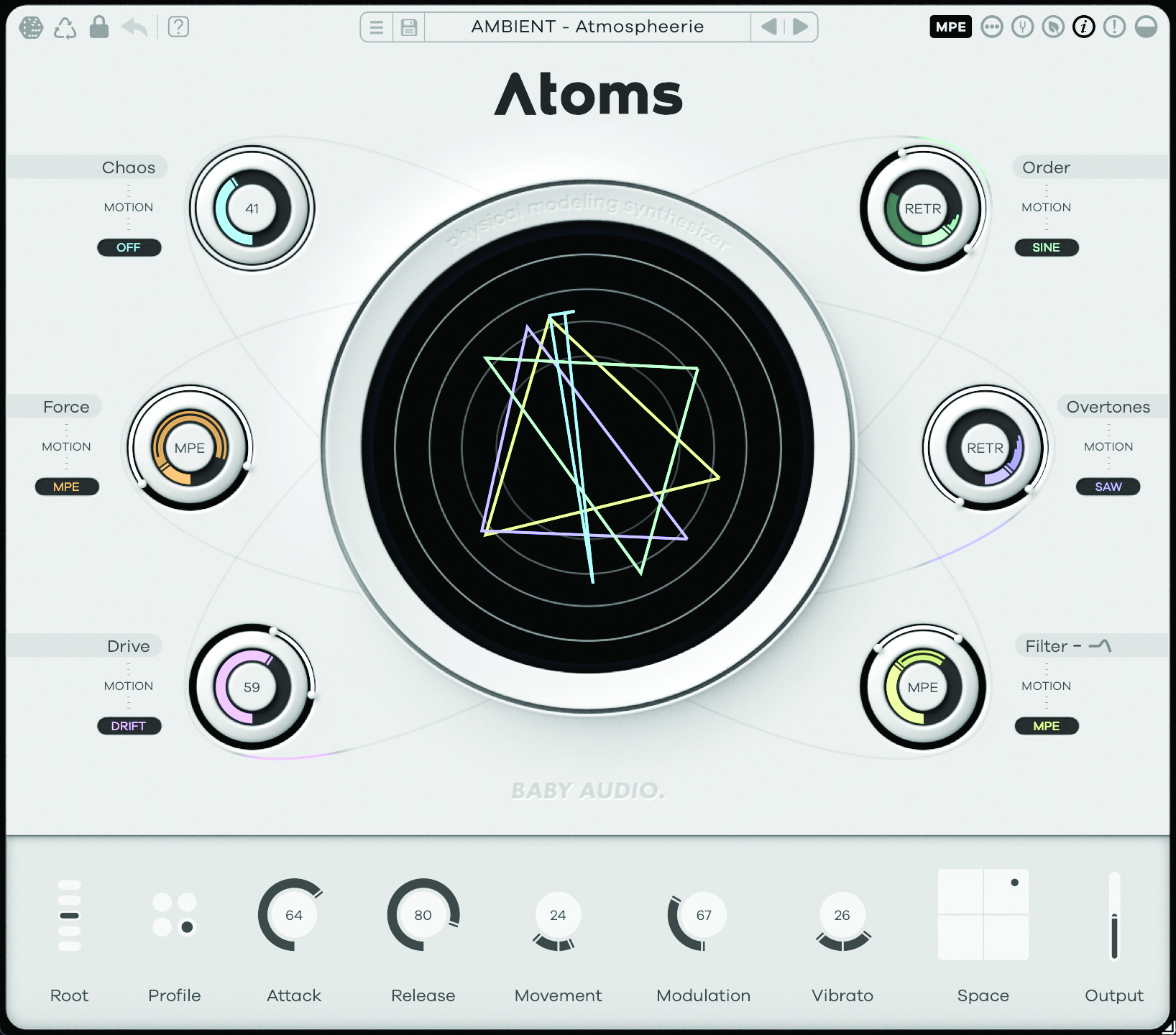MusicRadar Verdict
Atoms is characterful and natural-sounding. Come for the otherworldly pads, stay for the surprisingly hard-hitting bass.
Pros
- +
Vibrant and ‘natural’ sound – even at its most synthetic.
- +
Easy-to-use interface.
- +
Great for otherworldly pads and rich, modern bass.
Cons
- -
Some rival physical modellers have more breadth.
- -
Difference between character profiles can be subtle.
MusicRadar's got your back
Baby Audio Atoms: What is it?
Physical modelling is a synthesis process that works by simulating the resonant properties of a real-world object. Ableton Live users will likely be familiar with the concept through the DAW’s Collision synth and Corpus effect, and it provides the core of sound generation in plugins such as AAS Chromaphone and Reason’s Objekt.
Physical modelling is especially useful on two fronts: firstly, it can be the best way to synthesise mallets and bowed instruments, thanks to its ability to accurately emulate their natural vibrations. Pushed beyond the realms of what’s realistic, however, and physical modelling synths take on a second use thanks to their ability to conjure thoroughly modern and otherworld synth timbres.
It’s on this latter front that Atoms, Baby Audio’s new physical modelling synth, excels. Atoms generates sound using a simulation of what Baby Audio refers to as ‘interconnected masses and springs’, which are initially triggered by a bow-style exciter. Broadly speaking, think of it like a violin or cello with a morphing, shape-shifting acoustic body.

Baby Audio Atoms: Performance and verdict
The effect of this is controlled using six parameters that surround the plugin’s central display. The first of these is Force, which controls how aggressive that bow-like exciter is, a little like a velocity control, albeit one that introduces friction-like noise at higher levels. Above this is Chaos, used to introduce non-linear behaviour to the modelled resonance, resulting in slight drifts in pitch and volume. Overtones, meanwhile, adjusts the simulated position of the bowing action, altering the amount of higher frequency overtones.
The Order control acts as a high-frequency dampener, while Filter control rolls off higher frequencies further with a low-pass applied to the output. Finally, Drive applies waveshaping and harmonic clipping.

Key to Atoms’ character is the fact that each of these controls has its own modulation tool. These can apply a variety of LFO types, randomised drift or route MPE inputs to each parameter, in order to bring patches to life with movement. This is something that most of the synth’s generous stock of presets show brilliantly. Even at its most synthetic, there’s something pleasingly natural and organic about Atoms’ tones.
Along the bottom sit controls to further refine the sound. Here, users can select between four different character profiles for the central mass-spring network, offering more or less inharmonic and lo-fi sounds. The differences between these can be subtle, but still add to the depth. The remaining controls adjust the amp envelope, global modulation and apply a master reverb.
Want all the hottest music and gear news, reviews, deals, features and more, direct to your inbox? Sign up here.
As physical modelling synths go, Atoms lacks the breadth of some rivals, which offer more variety on exciter and resonator styles, but it benefits from focusing on a specific palette. The synth is capable of realistic strings, but comes to life once you dig into the atmospheres and otherworldly textures. What surprised us, however, was how handy it is for bass sounds – with an excellent array of modern, rich tones on offer.
MusicRadar verdict: Atoms is characterful and natural-sounding. Come for the otherworldly pads, stay for the surprisingly hard-hitting bass.
Baby Audio Atoms: The web says
"Make no mistake: for all the reality-warping possibilities here, there’s a deep, organic playability to what you create."
CDM
Baby Audio Atoms: Hands-on demos
Baby Audio
Alex Reid
Plugin Boutique
sonicstate
Baby Audio Atoms: Specifications
- KEY FEATURES: Physical Modelling synth plugin. MPE capable.
- FORMATS: PC/Mac, VST/AU/AAX.
- CONTACT: Baby Audio
I'm the Managing Editor of Music Technology at MusicRadar and former Editor-in-Chief of Future Music, Computer Music and Electronic Musician. I've been messing around with music tech in various forms for over two decades. I've also spent the last 10 years forgetting how to play guitar. Find me in the chillout room at raves complaining that it's past my bedtime.




